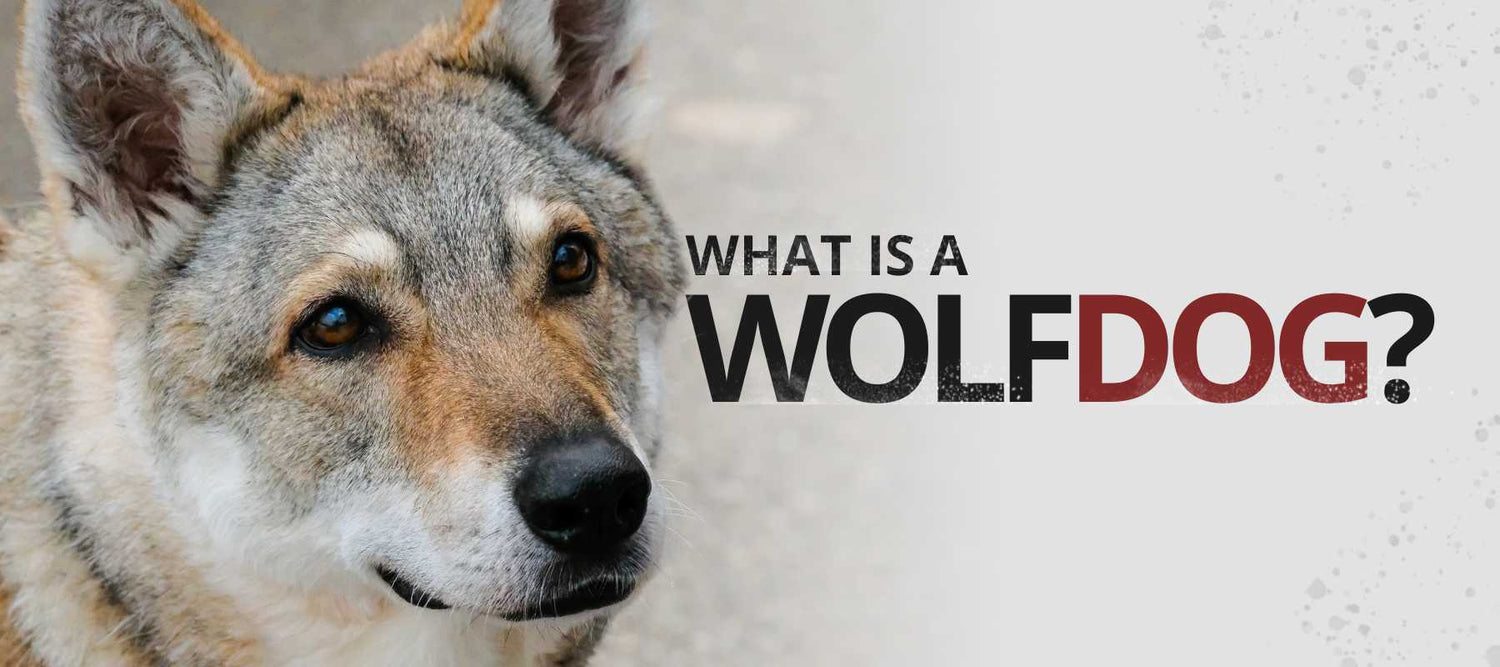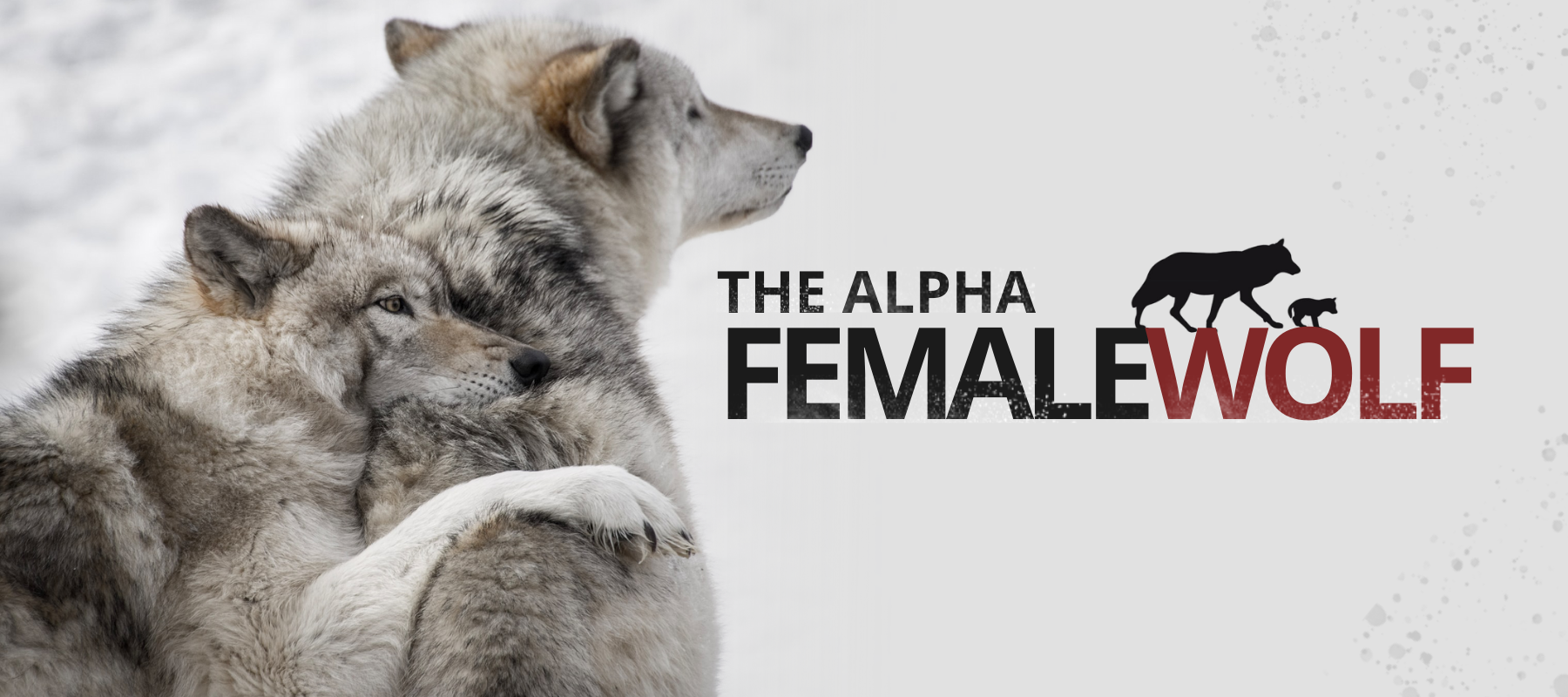As its name suggests, the wolfhound is a hybrid species between a dog and a wolf. While natural reproductions have been found, most crossbreeding has been deliberate. The point? To create hardy breeds that combine a wild side with an ease of domestication. Just like his cousin the Siberian husky, it looks like a pure wolf! But how to recognize a wolf-dog, what are their characteristics, is it legal to own one? Everything is explained in this article!

THE WOLF-DOG
Wolfdogs are canids that have been obtained by crossing a dog and a wolf in captivity, in order to obtain a wolf-like canid with canine-like behavior.
Also categorized as wolf-dogs, the canids resulting from reproduction between the wolf-dogs themselves. The domestic dog and the wolf represent two subspecies of the species Canis lupus, thus explaining many cases of natural interferences. At the same time, breeding has been programmed to produce new breeds of canids.🐺
However, some organisms also speak of wolf hybrids. According to them, there are Canis Rufus (red wolf), Canis Lupus (grey wolf) and Canis Simensis (considered by some to be a jackal). These would be the three common wolf species. In this case, the dogs are classified as subspecies of Canis Lupus. They are called Canis Lupus Familiaris.🐶
WOLF-DOG SPECIES
In the first half of the twentieth century, crossbreeding was carried out voluntarily with the intention of increasing the performance of canids while giving them a favorable character for domestication. Thus breeds such as the Italian lupo cane or Italian wolfhound were born.
Other American lines include the Blue Bay Shepherd, the Spencer, the North American Indian Dog and the Native American Indian Dog. However, only two breeds are currently recognized by the International Canine Federation (FCI): the Czechoslovakian Wolfdog and the Saarloos Wolfdog.

THE SAARLOOS WOLF-DOG
Lendeert Saarloos (1884-1969), a dog breeder based in Dordrecht (Netherlands) was a great lover of German shepherds. Not content with their status as working dogs and their "humanization" through their closeness to man, the breeder wanted to give this breed a natural disposition closer to the wild animal than it once was.
To this end, Lendeert Saarloos decided to breed a European she-wolf of Siberian stock with a German shepherd. After several mating failures, a viable litter of Saarlos wolf-dogs was finally born in 1935, from which a male puppy was used for the development of the breed.
A hybrid with more "natural" traits was sought to form a hardy working dog. The result was not what he expected, because instead of a working dog, the hybrid was described as cautious, reserved and lacking in ferocity. Despite its unfavorable characteristics as a working dog, the hybrid thrived as a companion dog like a wolf.
Leendert Saarloos' heritage of accentuating the canine's natural qualities was recognized in 1975, six years after his death. The preservation of the breed was entrusted to the good care of the Dutch Saarloos Wolf-dog Association (Nederlandse Vereniging van Saarlooswolfhonden), which was responsible for defending the interests of the lineage by drafting the new standard, among other things. The breed was definitively recognized by the FCI in 1981.
It can reach a height of 76 cm and weigh up to 45 kg. It has an athletic musculature with a dense coat that can be grey, red or white.

THE CZECHOSLOVAKIA WOLF-DOG
The Czech wolf was created 20 years later, in 1955 when a German shepherd was raised with a Carpathian wolf. The idea was to produce a mix with the intelligence, training ability and pack mentality of the German shepherd, as well as the physical prowess and endurance of the wolf.
In 1955, Colonel Karel Hartl (head of the border guards and engineer) and his team initiated an experimental program including biological tests based on the mating of a German shepherd and a Carpathian she-wolf. After many unsuccessful trials during which the female attacked the males, a successful mating resulted in the first hybrids being born on 26 May 1958.
Some puppies were then sent to the Slovak region to be crossed with other German shepherds and studied to assess their abilities.
The crossbreeding that took place to produce the Czechoslovakian Wolfdog took place in former Czechoslovakia with the aim of improving the resistance and physical performance of the dogs used to guard the country's borders. This wolfhound was bred to serve as an attack dog for special military forces as well as for rescue, tracking, breeding and hunting.
The army started using the third and then fourth generation while civilians started breeding them.
In 1982, it was recognized as a national breed in Czechoslovakia and later by the FCI in 1989. A year later, the first individuals were imported into other countries.
The Czechoslovakian Wolfdog can reach 65 cm in height and weigh up to 26 kg. Its coat is short, straight and thick, yellow-grey and silver-grey.
Unlike the shy Saarloos wolf-dog, Czech Wolfhounds are confident and assertive. They are also playful, temperamental and very protective of their family, a direct link to the wolf's genes. You can also pay tribute to the wolf's protective qualities with our selection of protective wolves for the home or ready-to-wear.

THE AMERICAN WOLF DOG
In North America, many wolfdog breeders have developed wolfdogs, these breeds with a very characteristic wolf physical traits and whose most famous representative is surely the American Tundra Shepherd Dog (American Wolfdog or Black Wolfdog).
The American Wolfdog has recently been exported to Europe, even if educational centers are rare there. Two majority lines (Nortaids and Spencer) express all the elegance of the wolf. They are said to have a less fearful character than Czech or Saarloos Wolfdogs.
The American wolf is considered as a lineage and not of breed, because it is not recognized by the FCI. The individuals are very different from each other, but in general, they are tall and of imposing size. They are also known to be stubborn and intelligent.
ADOPTING A WOLFHOUND: GOOD OR BAD IDEA?
Beyond physical traits of the wolf, the wolf-dog has inherited the wild character of its ancestors. The animal can thus show primary instincts when it comes to protecting its food, hunting, independence or sociability. More than any other breed, the wolfhound must be the subject of careful consideration before proceeding with its adoption so as not to abandon the animal as the infamous Yuki the giant wolf dog.
This intelligent animal with a massive body devotes itself entirely to its master, whose absence it finds difficult to bear. As a skilled guardian, it keeps away any intruder that approaches its property.
Wolfdogs feel a vital need to share their daily life with at least one other dog.🐕 Ideally, his companion has the same size as him and a solid education to serve as a model. If there is no companionship, the owner must patiently teach his wolfhound solitude.
Living in a city apartment is not an option because this living environment goes against his physiological needs.🏡 The canine feels at home in the great wilderness countries, in a house with a large, well fenced garden alongside dynamic people who will know how to tame it gently.

ARE WOLF DOGS LEGAL
It is illegal to own a pure wolf in the United States. There are even some countries where it is illegal to own a wolf-dog!
However, in the United States, owning a wolf-dogs perfectly legal according to the authorized breeds, such as the Czechoslovakian wolfhound or the Saarloos wolfhound.
If you want another hybrid, you will be subject to an authorization for the possession of wolves in accordance with the regulations of each country.
HOW MUCH DOES A WOLF DOG COST
Upon adoption, prices vary between $1,100 and $1,700, to which must be added the annual caring price of the wolf dog, which is generally between $1,150 and $1,200.💰
This includes the vaccination fees but also the monthly fees related to feeding your pet. As far as his diet is concerned, the wolf-dog will mostly be able to eat kibbles if they are of very high quality. It is important that these kibbles are rich in proteins of animal origin and are of good nutritional quality.

ARE WOLF DOGS SAFE
Education requires consistency, patience and coherence as well as indispensable socialization. Novice masters could let themselves be overtaken by this great sensitive dog, so an experienced hand is needed to guide the wolf-dog and accompany him throughout his life.
The Saarloos Wolfdog is a proud and independent animal. He is full of energy and is somewhat stubborn in training. Nevertheless, this does not detract from his attachment and devotion to his master. If a relationship of trust is created and strengthened, the Saarloos is very reliable. Rather distant, especially with strangers, it is not appropriate to force contact with this dog.
The Czechoslovakian Wolfdog can nevertheless be sensitive and fearful of strangers, but will be very close to its masters. The character of the Czech Wolfdog, which is sometimes assertive, should be channeled with a firm, always consistent and benevolent education. If you buy a Czechoslovakian Wolfdog, you should offer him sufficient activity to meet the needs of this versatile working dog and, if possible, let him live with several dogs in the household, as his need for contact with his fellow dogs is great.
HOW BIG DO WOLF DOGS GET
The Wolfhound, in general, is of medium-large size.
On average, a female wolfhound weighs between 44 lbs (20 kg) and 55 lbs (25 kg) and is 1.9 ft (60 cm) to 2.1ft (65 cm) tall.
On average, a male wolfhound weighs 50 lbs (23 kg) to 63 lbs (29 kg) and is 1.9 ft (60 cm) to 2.1ft (65 cm) tall.

HOW LONG DO WOLF DOGS LIVE
The life expectancy of a wolf dog ranges from 12 to 15 years on average. This may vary slightly depending on the crossbreeding of the animal.
THE DIFFERENCES BETWEEN A DOG AND A WOLF-DOG
Logically, the introduction of genes from a wild animal into the dog has resulted in offspring expressing certain traits that are wilder and more independent.
Here are some common characteristics of wolfhound breeds:
- They all have very high energy and need very intense exercise every day.
- They shed a lot of hair, as they shed their coat twice a year.
- They experience extreme separation anxiety and are destructive when left alone.
- They can be aggressive towards other dogs and pets when they feel threatened.
- They need early socialization from an early age to avoid aggression and dominance as they grow older. A life with another slightly older canine companion is ideal, as they learn by mimicry and hate loneliness.
- They will always be suspicious of strangers, which makes them excellent warning dogs.
- They can be noisy with a lot of barking and howling (depending on the breed).
- Toilet training is difficult for these animals, which urinate frequently to mark territory.
CONCLUSION
If you have a crush on this breed of dog, it will be necessary to be well informed and ask yourself the right questions before adopting a Wolfdog. You should never choose this breed based exclusively on physical criteria. So yes, it is a magnificent dog, but it is also a breed that requires a lot of activity, as well as special knowledge and attention.



